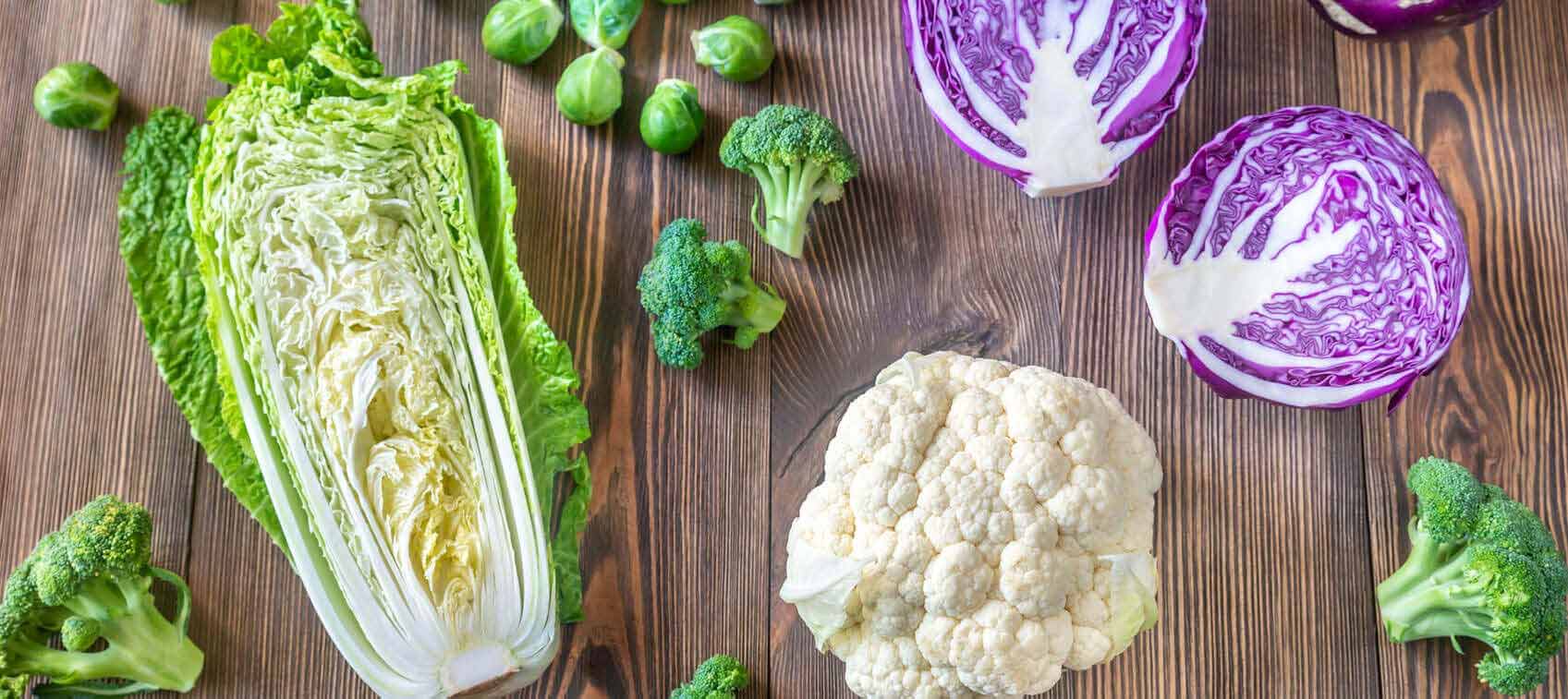
For at least three decades, I’ve been praising the amazing health properties of cruciferous vegetables such as cabbage, broccoli, bok choy, Brussels sprouts, cauliflower, cress, kale, mustard greens, radish, horseradish, turnip, rutabaga, and kohlrabi. If you haven’t heard of some of these, join the club: this category of vegetables isn’t necessarily the most popular in this country.
Other societies, particularly those in the Far East, have always recognized the power of cruciferous vegetables, primarily related to the sulfur content in these vegetables. Sulfur used to be a very widely-used medicinal compound. Some of its benefits include:
- Antimicrobial and antioxidant properties (In fact, sulfur is used on dried fruit to kill bacteria and parasites.)
- Laxative properties
- Cancer-fighting abilities
- Skin, hair, and joint health (particularly arthritis)
Sulfur supplements may have fallen out of favor, but that doesn’t mean sulfur has become ineffective over time. In fact, the arthritis supplement chondroitin sulfate owes much of its efficacy to its sulfur component. On my ranch, we often use sulfur salt lick (blocks) to improve the health and trace mineral consumption of the animals.
Sulfur as a health remedy may seem “old school,” but you can still buy sulfur-based ointments, lotions, and soaps for skin conditions in most pharmacies. Flowers of sulfur capsules and tablets are also still available. (It’s interesting that sulfur is also called Brimstone powder among root doctors, hoodoos, and witches.) When I was growing up, many kids were given chewable sulfur tablets to help with skin problems. I was one of them and I still have a vivid memory of the taste. It wasn’t pleasant—just the thought makes me nauseous.
Not only is the taste disagreeable, sulfur is also directly responsible for some of the less-than-pleasant smells that can emanate from the body. Sulfur-based flatulence can be unforgettable. In fact, sulfur is the one of the primary components in novelty “fart-in-a-bottle” products.
Keratin, the structural protein in hair, contains a very high content of sulfur. The sulfur is what gives burning hair its distinct odor. Sulfur’s smell is so offensive that a sulfur compound is added to propane so that people can recognize a leak and take appropriate action. Propane itself is actually odorless in its natural state.
I3C for NAFLD
Two sulfur-containing chemicals found in cruciferous vegetables are indole-3-carbinol (I3C) and 3,3’-diindolylmethane (DIM). Both have demonstrated anti-cancer properties. And new research has shown that I3C can help prevent and even treat non-alcoholic fatty liver disease (NAFLD).
This is huge and welcome news. The current worldwide prevalence of NAFLD is around 25 percent. Thanks to the rising incidence of obesity and type 2 diabetes in this country, it is currently projected that there will be a 21 percent increase in NAFLD, leading to a 33.5 percent overall prevalence of by the year 2030.
Let me put that into perspective….
In just 10 years, one-third of the people in this country will have NAFLD. This will lead to a 137 percent increase in the number of patients developing liver cancer. And for those who don’t develop cancer, the liver fibrosis resulting from NAFLD will result in a 168 percent increase in end-stage liver disease and become the most common reason for liver transplantation in the United States.
If you are overweight or have type 2 diabetes, I recommend adding cruciferous vegetables to your diet. Indole levels in those who are clinically obese are significantly lower than those who are lean. Additionally, lower indole levels result in a higher amount of fat being deposited in the liver.
Indole also acts on cells in the intestinal tract to send out molecular signals that dampen inflammation. Once again, this highlights the importance of maintaining a healthy intestinal tract with probiotics, fermented foods, and cruciferous vegetables.
Taking Sulfur as a Supplement
The alternative to consuming cruciferous vegetables is taking indole-3-carbinol supplements. Unless you already have been diagnosed with NAFLD, I would recommend eating cruciferous vegetables instead of supplementing. If you already have NAFLD, then add the supplement along with the vegetables to your diet.
In a lifetime of studying natural therapies, there seems to be a common thread when it comes to food, herb, and plant remedies. Scientists like to isolate specific compounds in these things to understand how they work on a molecular basis. Then these isolates are either sold as supplements, or duplicated synthetically and sold as drugs.
Nature, however, seems to package various compounds together in such a way to improve their efficiency and/or to help offset any possible toxicity. This is certainly the case with the cruciferous vegetable family. Every few years we learn about a “newly discovered” unique compound or component in one of these vegetables.
If you want to stay ahead of the research, instead of waiting for the next discovery to be isolated and sold as a new miracle drug, start including these miraculous vegetables in your diet now. You’ll be way ahead of the majority of the population when it comes to improving your skin, joints, and hair, as well as preventing and/or treating liver disease and cancer.


